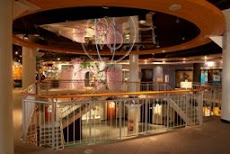
Harry Houdini was a Hungarian-American magician and escapologist, stunt performer, actor and film producer. One of his most famous publicity stunts was to escape from a nailed and roped packing crate after it had been lowered into the water.
Houdini first performed the escape in New York's East River in July 1912. Because the police would not allow him to use a local pier, Houdini hired a tugboat. He invited members of the press on board. Houdini was locked in handcuffs and leg-irons, and then he stepped into a crate. The crate was nailed shut and ropes were wrapped around the crate. The crate was weighed with two hundred pounds of lead and lowered into water. Houdini escaped in fifty-seven seconds!
Houdini swam back to tugboat and when he arrived at the pier, he was fully dressed in his street clothes. The crate was pulled to the surface and found to still be intact with the handcuffs inside. Houdini would perform this escape many times, and even performed a version on stage, first at Hammerstein’s Roof Garden (where a 5,500-gallon tank was specially built), and later at the New York Hippodrome.
Want to know more about the magic behind magic? Come to the Museum of Discovery’s special event ABRACADABRA, July 1-3, 2010. Local magicians will perform at (look up showtimes on website).
Houdini first performed the escape in New York's East River in July 1912. Because the police would not allow him to use a local pier, Houdini hired a tugboat. He invited members of the press on board. Houdini was locked in handcuffs and leg-irons, and then he stepped into a crate. The crate was nailed shut and ropes were wrapped around the crate. The crate was weighed with two hundred pounds of lead and lowered into water. Houdini escaped in fifty-seven seconds!
Houdini swam back to tugboat and when he arrived at the pier, he was fully dressed in his street clothes. The crate was pulled to the surface and found to still be intact with the handcuffs inside. Houdini would perform this escape many times, and even performed a version on stage, first at Hammerstein’s Roof Garden (where a 5,500-gallon tank was specially built), and later at the New York Hippodrome.
Want to know more about the magic behind magic? Come to the Museum of Discovery’s special event ABRACADABRA, July 1-3, 2010. Local magicians will perform at (look up showtimes on website).



